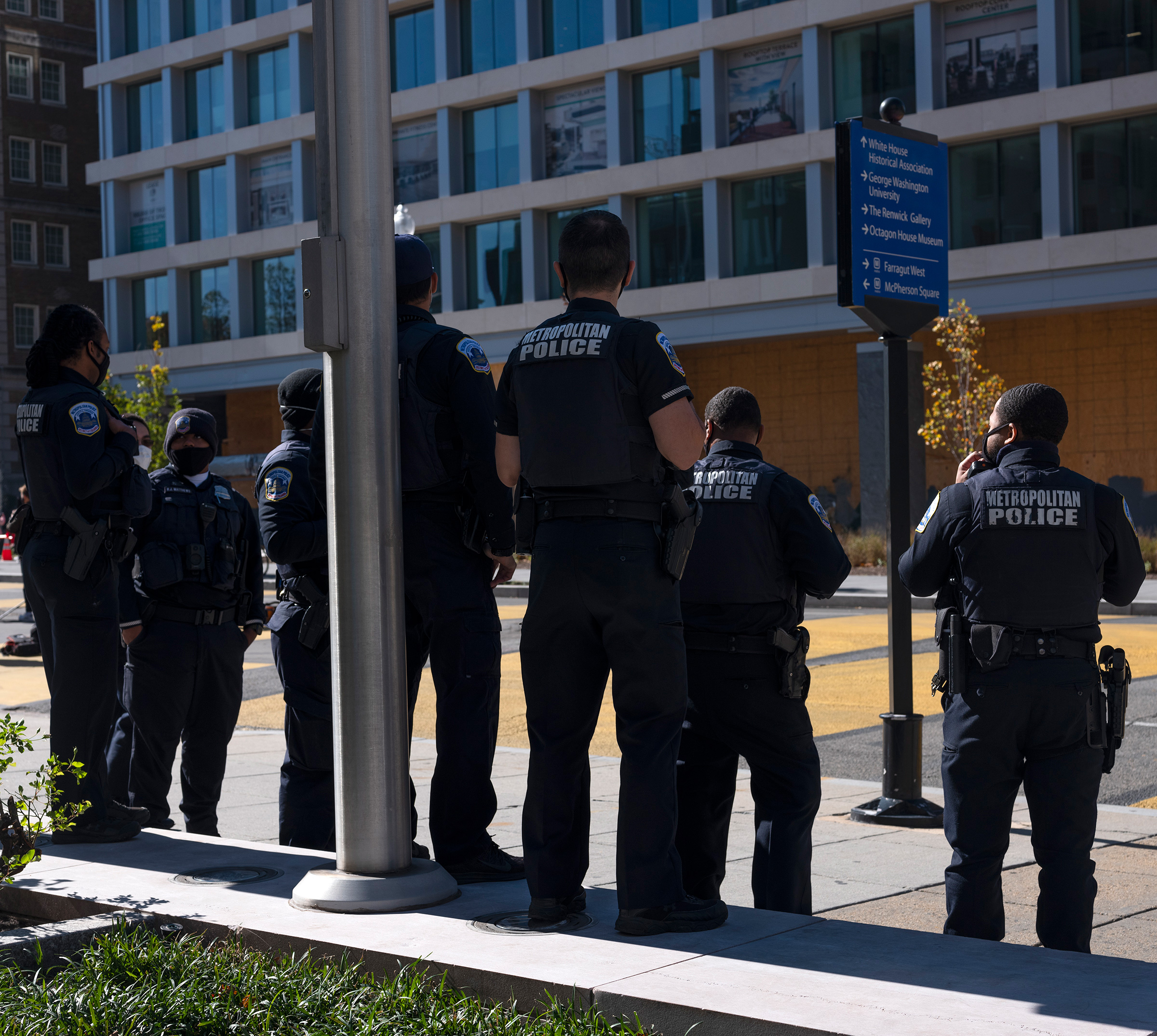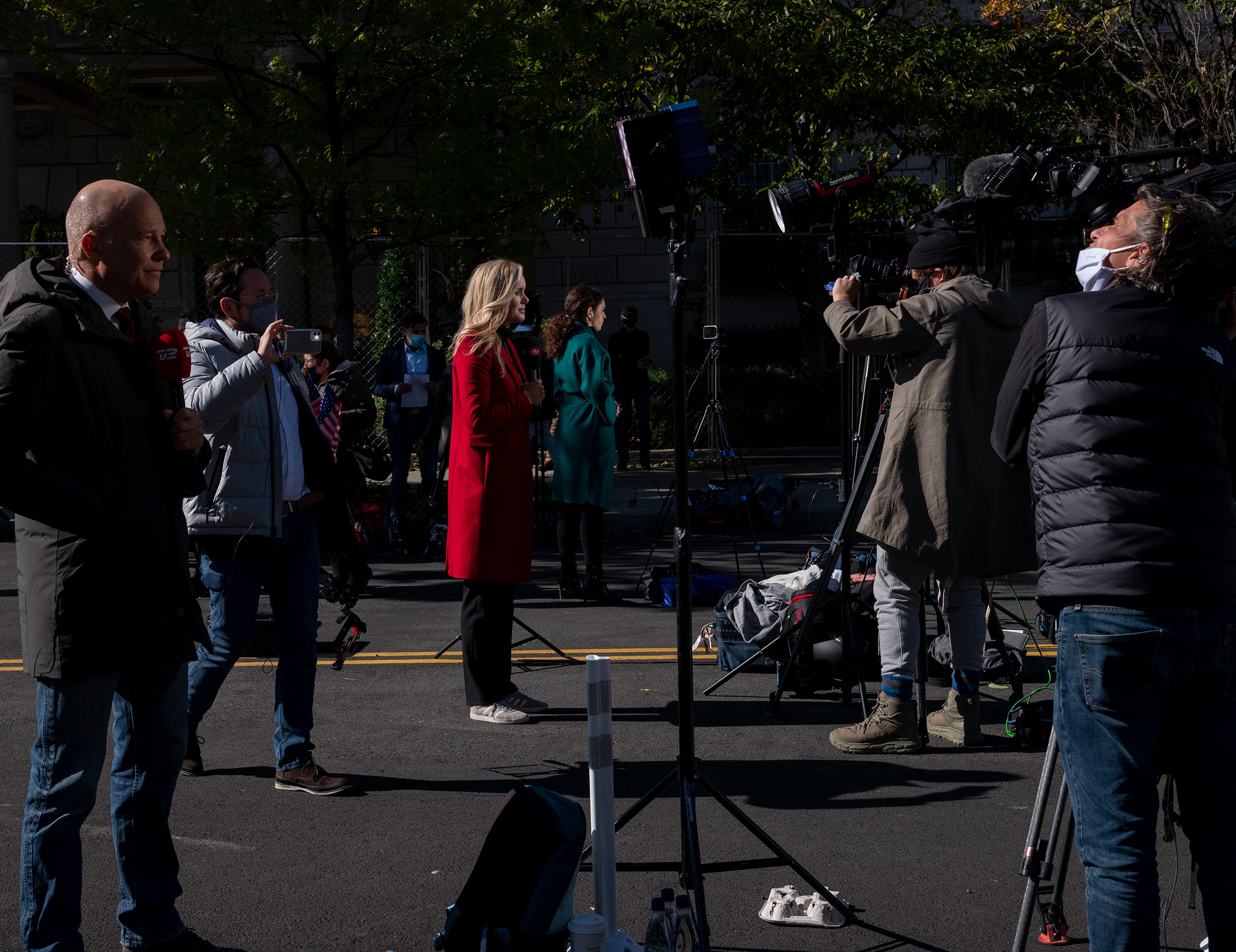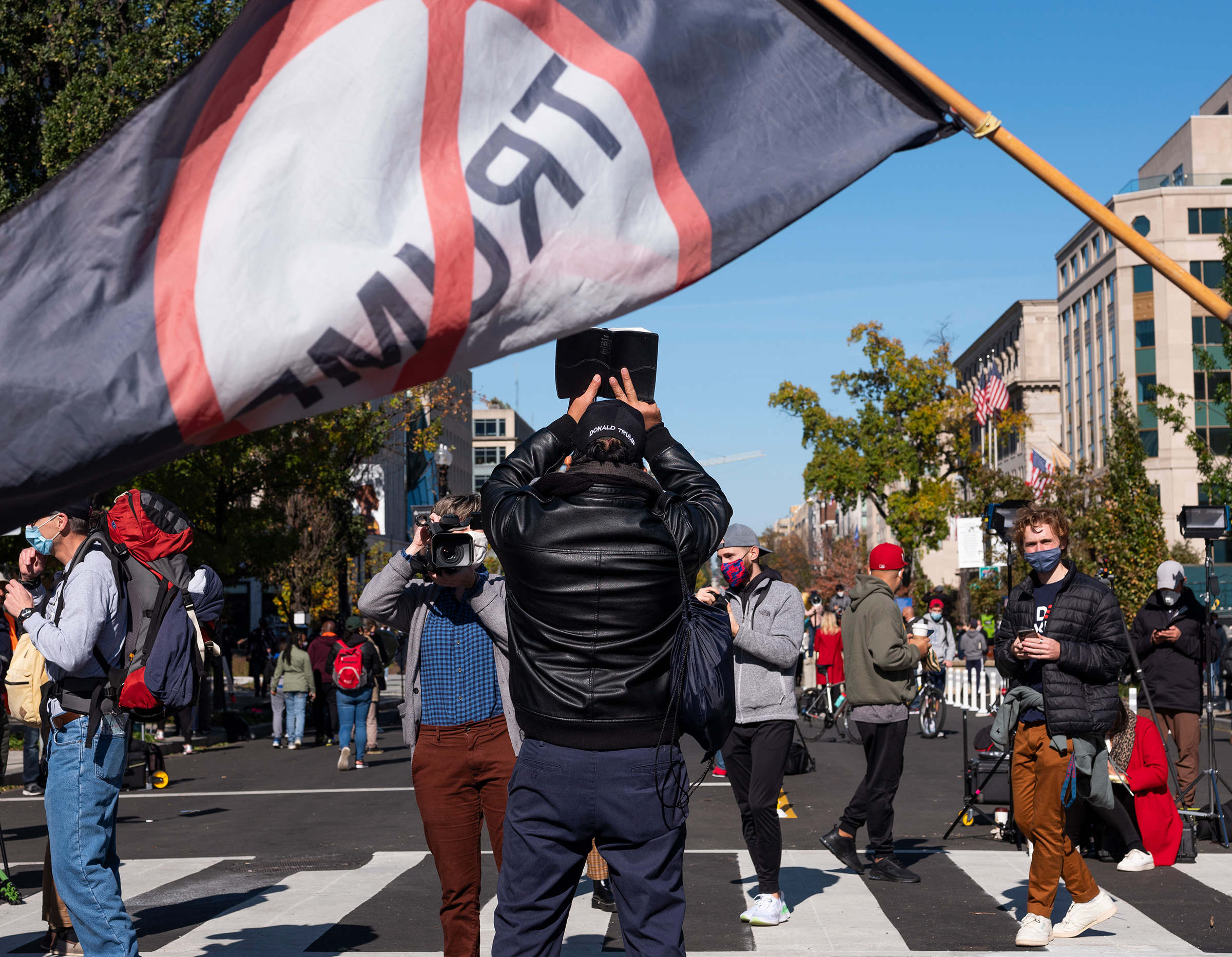Wall-to-wall plywood made a return to the streets of Washington, D.C. on the eve of Election Day, as did the thwap-thwap of police and other helicopters making arcs over neighborhoods near the White House. Businesses for several city blocks around 1600 Pennsylvania Avenue braced for possible blowback if the incumbent President Donald Trump wins Tuesday’s presidential poll, or prematurely declares himself the winner. The White House itself was fortified with extra layers of “unscalable” metal walls to keep protesters at bay.
Law enforcement was also on high alert. Police cruisers moved into position in D.C.’s central business district and around the White House on Monday evening. Some federal and city employees have been told to bring in changes of clothes and be prepared to stay for a few days, in case of violence, according to a DC law enforcement source, a second city official, and a former senior U.S. official.

“The D.C. police and the police in the region are preparing for mass protests and rioting in case Donald Trump is re-elected,” the Washington law enforcement source tells TIME. “I don’t think there will be mass casualties, but I would stay clear of downtown D.C. on Election Day,” the law official says. All spoke anonymously because they did not want to describe security preparations publicly.
Even by the measure of this jarring year, they were strange scenes for the American capital, the physical heart of America’s 244-year-old democratic experiment. In January, as the election year kicked off, few would have envisioned the District of Columbia would look this way come Nov. 3. But after long months of pandemic lockdown, economic crisis, and nationwide protests over racial injustice this summer, this Election Day is serving as a crescendo of nationwide frustration, anxiety, anger and hope.
Many activists are returning to the scenes of the summer protests in the capital as in-person voting is underway. Activist groups, including Black Lives Matter, Occupy DC and Shutdown DC, are planning election “watch parties” starting at 4pm, just across Lafayette Square from the White House, where federal police used tear gas to clear demonstrators during protests over the killing of George Floyd, Breonna Taylor and other Black Americans by police. New protests erupted in the capital over the weekend following the death of 20-year-old Karon Hylton-Brown, who died on Oct. 23 after Metropolitan Police Department officers tried to stop him for riding on an electric scooter on a sidewalk without a helmet. “We don’t trust the police,” a friend of Hylton-Brown’s told TIME on Sunday, speaking anonymously. “People are on edge.”

Still, the area, since christened Black Lives Matter plaza by D.C. Mayor Muriel Bowser, had a festive air on the morning of Election Day, with reporters outnumbering a smattering of protestors near the fence that now surrounds Lafayette Square. One black-clad protestor, wearing a steel-studded mask, who declined to give her name, said she didn’t know what to expect during the day. But 24-year-old Russian-American Derek Torstenson, who says he belonged to RefuseFascism.org, says he was prepared for violence from Trump supporters. “I have an umbrella…goggles, and pepper spray….in case some person comes and attacks me for no reason,” he says, sitting next to the fence that’s now festooned with signs ranging from “Donald Trump is a White Supremacist” to “No Trump KKK USA.”
By Tuesday evening, however, the crowd only numbered in the hundreds, and after a few minor scuffles with DC police, ended up dwindling as the temperature dropped toward midnight, and as it became clear from the cable news reports broadcast on jumbotrons near the White House that it would take well into the night, if not a couple days, before the result become clear.
D.C.’s Police Chief Peter Newsham had told reporters that there were no specific threats in the offing in the nation’s capital, and the city had not seen a need to deploy the D.C. National Guard. The D.C. National Guard spokesman Senior Master Sergeant Craig Clappe confirmed to TIME Tuesday that guard troops had not been requested as of midday. But the luxury shops of City Center DC have disappeared behind walls of wood, with more plywood being furiously hammered into place on Tuesday afternoon, and even a branch of the U.S. Post Office in central D.C. thought it more prudent to board up.
Bowser called the boarding up of local businesses — something she hadn’t urged them to do — “saddening,” and a sign that people are “concerned about peaceful transitions of power or the fair counting of votes or the unintimidated access to the polls.” Bowser, representing largely Democratic D.C., clashed with incumbent Trump over the summer during First Amendment protests in the capital that grew violent, prompting Trump to threaten to send active duty military forces onto D.C. streets.
The District’s preparations are being mirrored in other states around the country that expect possible conflict, like Pennsylvania, Michigan, Georgia and Florida. The Department of Homeland Security has warned that election sites nationwide could become flashpoints, as domestic violent extremists and far-right groups like the Proud Boys, Oath Keepers, and Three Percenters have called on supporters to “monitor” polling sites, and left-leaning groups have promised to counter-monitor them.

U.S. security firm GardaWorld, which is best known for providing protective services in war zones to the State and Defense Departments, warned of “potentially disruptive, and possibly violent, protests…likely in multiple U.S. cities,” regardless of the vote’s outcome. “It is likely that major protests by activists supportive of both major parties will occur for an indeterminate period, with the possibility of clashes, arson, looting, and other violence, reaching unprecedented levels,” the report adds.
Another U.S. security firm, Global Guardian, predicts that the delay in getting final results with so many votes coming by mail has set the stage for “a disputed election” and “an elevated possibility for election-related unrest,” in a report that points out that the 2016 election “came down to approximately 107,000 votes in Pennsylvania, Michigan and Wisconsin – three states that could receive postmarked ballots after Election Day.”
Bowser urged D.C. residents who are voting in person today to vote — and then go home. “Be safe in your homes,” she said at a press briefing on Monday. “And count on local and state officials to make sure that every vote is counted.”
More Must-Reads from TIME
- Donald Trump Is TIME's 2024 Person of the Year
- Why We Chose Trump as Person of the Year
- Is Intermittent Fasting Good or Bad for You?
- The 100 Must-Read Books of 2024
- The 20 Best Christmas TV Episodes
- Column: If Optimism Feels Ridiculous Now, Try Hope
- The Future of Climate Action Is Trade Policy
- Merle Bombardieri Is Helping People Make the Baby Decision
Contact us at letters@time.com
